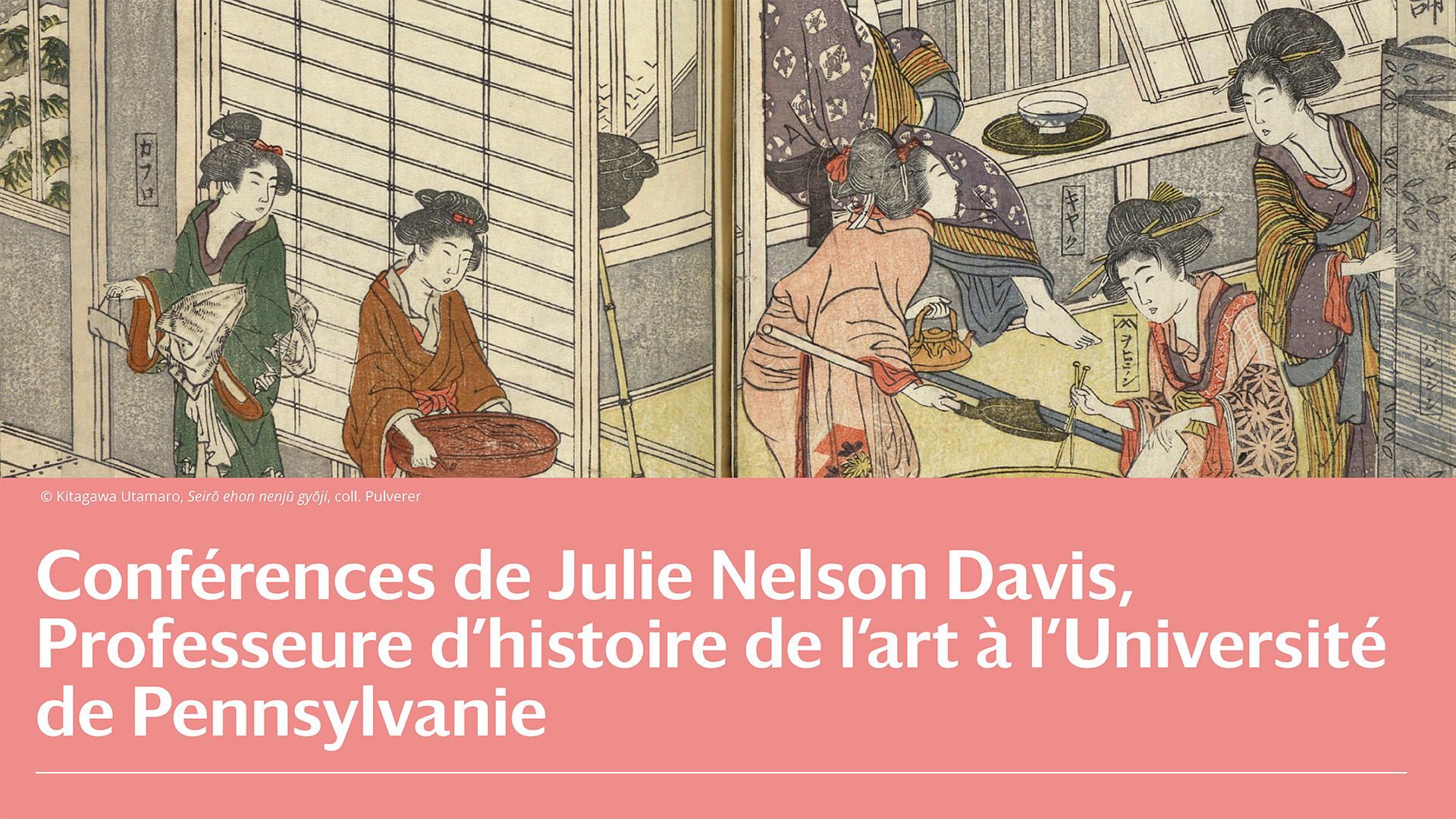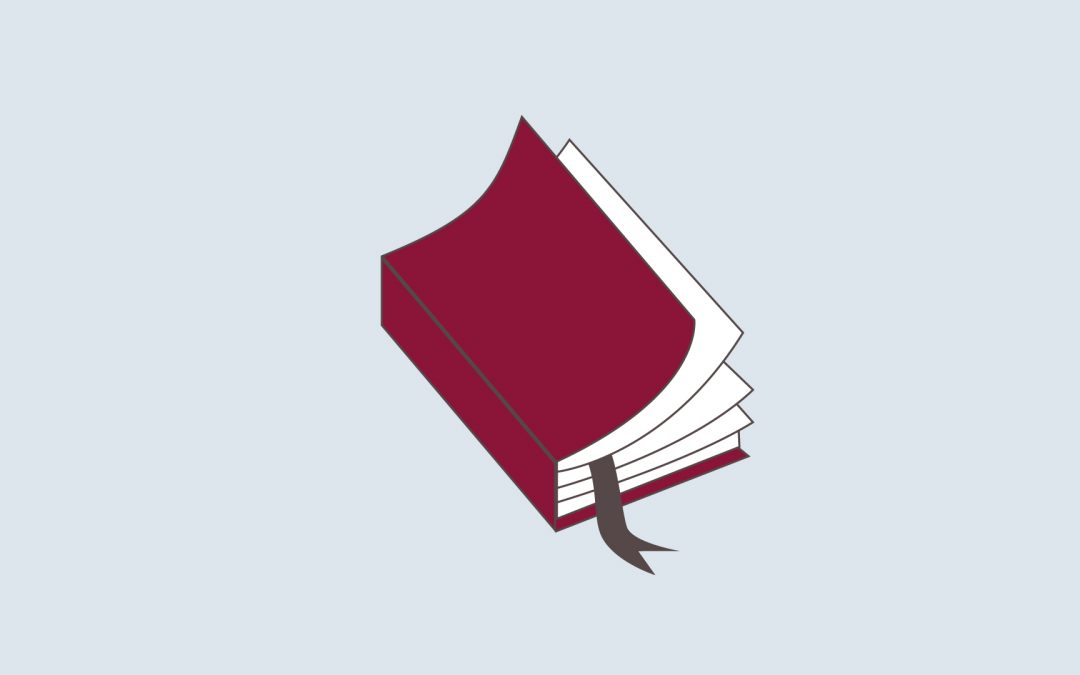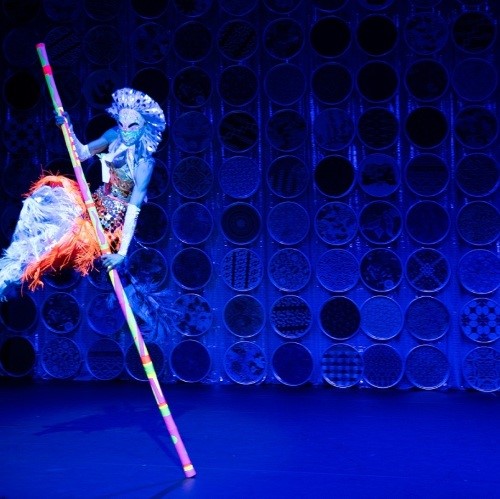Julie Nelson Davis, Professeure d’histoire de l’art à l’Université de Pennsylvanie, donnera deux conférences, les 5 et 8 mars prochains.

Representing the Yoshiwara in Print: An Utamaro Case Study in the Era after #metoo
Mardi 5 mars 2024, 16h-17h30, Amphi Turing, Bâtiment Sophie-Germain, Université Paris Cité, 8 Place Aurélie Nemours, 75013 Paris
In one of the most famous early modern illustrated books, the Annual Events of the ‘Azure Towers,’ Illustrated (Seirō ehon) Nenjū gyōji, from 1804, artist Kitagawa Utamaro and writer Jippensha Ikku described the festivals and customs that marked the annual calendar for the licensed prostitution district, the Yoshiwara, in the city of Edo. Often appreciated as one of the most beautiful books of its time, it has been often described as a kind of insiders’ view into the secret life of the quarter, as though documentary in intent. In this presentation, I overturn that reading and address how the book served to promote the district, arguing that now, more than ever, we need to put this book, along with other images of “beauties,” into a critical dialogue with their social and historical contexts. Taking up some of the issues addressed by the #metoo movement, this talk further addresses ways to think more critically about the role of art history, literary studies, and Japanese studies in problematic narratives that extend into the present.
Replica and Model: The Brush in the Printed Book
Vendredi 8 mars 2024, 10h30-12h, Amphi Buffon, 15 Rue Hélène Brion, 75013 Paris
Often when we open an Edo-period printed book, we encounter illustrations that look like paintings or at handwriting that looks so much like calligraphy. Some look so much like brushed ink on paper that we might pause and ask: is it really printed? The swells and drags of the brush preserved in print the movement of the hand, alluding through the illusion to the intentions of the artist. Some model the brush so fully that they came to define artistic style and authorial gesture. In this lecture, I will consider how, for their makers and viewers, woodblock printed books served to represent other media, sometimes even functioning like simulacra of their originals. Looking at examples where verisimilitude is sought, as well as interrupted, this presentation will explore intermedial dialogues between brush, block, baren, and paper, querying the limits of illusionism. How these books functioned, too, in later replications, raises important issues around the status of the original and the implications of the brush made multiple.
Bio-bibliographie
Julie Nelson Davis se consacre à l’étude des arts et de la culture matérielle du Japon au xviiie et au xixe siècle.
Ses travaux portent en particulier sur l’estampe, la peinture et le livre illustré, et explorent les questions liées à la pratique artistique, à la notion d’auteur, au genre, ainsi qu’à la censure.
Principaux ouvrages : Partners in Print: Artistic Collaboration and the Ukiyo-e Market, University of Hawai’i Press, 2015 ; Utamaro and the Spectacle of Beauty, Reaktion Books, 2007, réed. 2021 ; Picturing the Floating World: Ukiyo-e in Context, University of Hawai’i Press, 2021.
À lire aussi

« Poèmes du Dhyâna, perles de liberté »
Yannick Bruneton a le plaisir de vous annoncer la parution récente de sa traduction d’une anthologie classique de la poésie coréenne du Sŏn (équivalent du Chan chinois et du Zen japonais) : « Poèmes du Dhyâna, perles de liberté ». L’anthologiste, Hangjŏk Sŭnim, un...

Prix Jacqueline Pigeot du meilleur mémoire de master 2025
Le lauréat du prix Jacqueline Pigeot 2025 est Loris MEISSIMILLY, pour un mémoire de Master 2 rédigé sous la direction de Gilles Guiheux intitulé « Une ‘nouvelle route de la soie’ discontinue. Représentations et territorialisations du corridor Chine-Asie centrale-Asie...

Post Orientalist Express : Eun-Me Ahn
Le Pôle Culture a ouvert en septembre dernier une billetterie en ligne. Nous proposons des tarifs préférentiels pour des spectacles de danse, de théâtre, de magie ou de cirque dans une quinzaine de théâtres partenaires. Cette année, nous avons sélectionné un spectacle...

City Makers and the Politics of Urban Diversity Governance. Comparative Approaches from Europe and Asia
Marie GIBERT-FLUTRE (Professeure de Géographie à Paris 1) à le plaisir de vous annoncer la parution de l’ouvrage collectif issu d'un programme de recherche collaboratif entre l’Université Paris Cité et la National University of Singapour, mené en 2021 et 2022: City...
